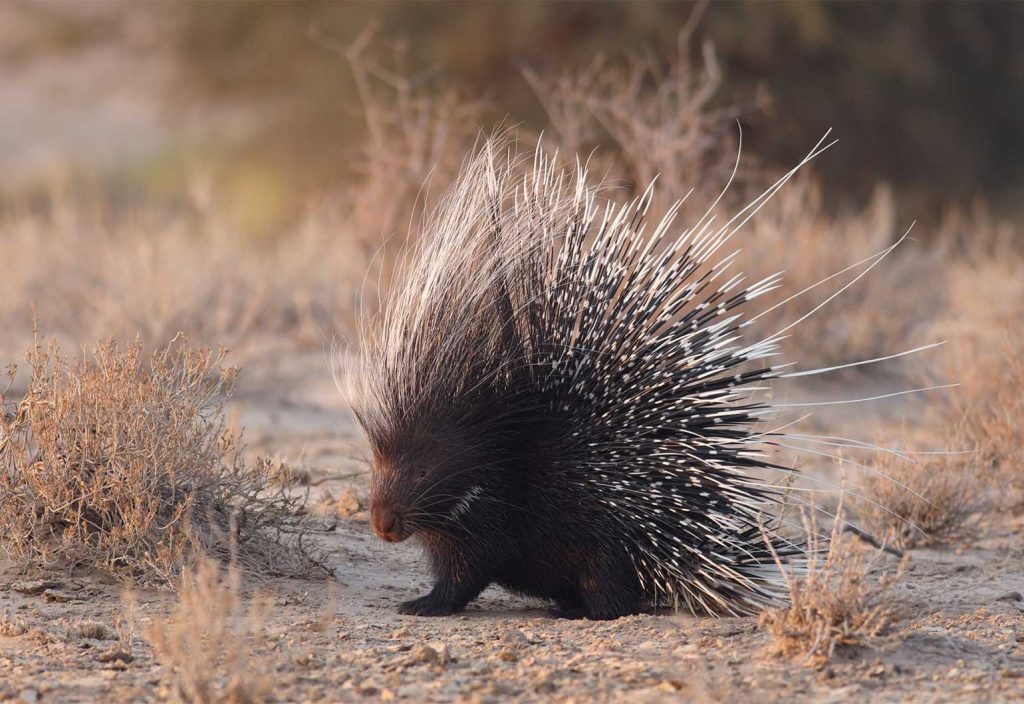Porcupines are born with thousands of sharp, needle-like quills. A group of engineers have discovered that through 3D printing, these can be mimicked to design lightweight materials that can handle extreme loadings.
Researchers at RMIT University say their research into the internal structure of porcupine quills could inspire the future of buildings, vehicles and infrastructure.
This is because they discovered that the internal morphology of porcupine quills makes them an ideal material for buckling resistance, meaning they could be used to create materials that can withstand crashes and impacts.
Dr Phuong (Jonathan) Tran, who leads biomimicry research at RMIT’s School of Civil and Infrastructure Engineering, has long been fascinated by the animal.
“Porcupines are a childhood curiosity of mine,” he told create. “I was obsessed with its spiky quill that no other creature has. It must have been through a very rough time during its million years of evolution.”
Tran’s research group learns from natural materials like porcupine quills, exploring their architectures, microstructure and material properties. He said one of the greatest research challenges was in sourcing porcupine quills to study.
“We tried to get some [quills] from zoos in Australia, but they don’t collect them,” he said. “In the end, we had to purchase them from Africa, where there is a large species of porcupine.”
Tran and his colleagues, led by student Yun Lu Tee, then cut the quills into small pieces, up to 100 times smaller than a human hair. Under microscopic observation including X-ray tomography, they found the quills are divided by stiffeners into segmentations resembling citrus fruits that extend radially from the shell to the core.
“The keratinous-based material comprises three distinct phases: shell, foam and stiffeners, which can be easily identified by the varied density and thickness,” he said.
“The relatively thick shell withstands high compressive load, while the foam infill helps delay the failure of the biomaterial under mechanical loading.”
Additive manufacturing
What Tran and his colleagues learned motivated them to design bio-inspired structures with multiple segments which they fabricated via stereolithography.
“Current research shows the potential of additive manufacturing (AM) in replicating a relatively complex architecture via bioinspiration,” Tran said. “This could lead to a broad range of engineering applications requiring lightweight features under extreme loadings.”
They’re hoping to solve the eternal engineering problem: how can we find stronger material that is also lighter?
“This is happening not just in the construction industry, but also in automotive, aerospace and other forms of engineering. We’re always trying to find structures that are very effective and use optimised amounts of materials,” he said.
When it comes to porcupine quills, they’re an ideal model for reconsidering support columns in high compression buildings.
“The quill is basically a cylindrical part, where there is a very stiff shell outside. The keratin layer makes it very strong, and we realised that this doesn’t need to be very thick,” Tran said.
“This could also apply to guards around the car to protect it from a crash impact — something made up of a hollow tube section that is very light.”
Manufacturing nature
Tran and his group have only been operating for three years in the field of biomimicry, but have come a long way in that time.
The team has already created computational modelling tools to redesign the interior structures of the porcupine quill.
“The technology advancements in recent years means that we can use technology like 3D printing to mimic and replicate the quills,” Tran said.
For now, Tran will keep looking into his microscope to understand the porcupine quill that has fascinated him since childhood.
“There will be more questions, which we will continue to investigate further — but it’s really quite an exciting topic,” he said.
